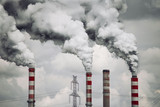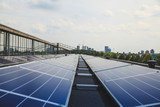The Importance of Environmental Engineering
In 1854, John Snow (no, not the Game of Thrones character), a physician investigating cholera outbreaks in Victorian-era London, went door-to-door throughout the streets of Soho neighborhood asking local residents where their drinking water came from. He discovered that cholera was much more common in areas where residents drank unfiltered water that had been pumped from the river Thames. In 1858, a record-breaking heat wave caused the water level of the Thames to drop, and it became clear from the putrid smell hanging heavy in the city air that massive amounts of raw sewage were covering the exposed embankments. Much of the solid fecal waste in London had begun to be discharged into the Thames after the implementation of policies outlawing open cesspits in homes, which had become a problem as London’s population had rapidly increased. Drinking water was commonly sourced from the Thames, and as outbreaks of cholera became more frequent, and the smell of sewage culminated in what became known as the “Great Stink of London,” it was clear that a solution was needed. What followed was one of the greatest feats of environmental engineering in history.
The Metropolis Local Management Amendment Bill, which was passed on August 2nd of 1855, gave Joseph Bazalgette permission to begin designing and constructing roughly 1,100 miles of a new sewer system that would carry waste to pumping stations. The waste would then be emptied into the Thames much further downstream and flow out to sea. The new sewers were a massive benefit to public health, and Bazalgette was knighted in 1874 for his services to the city. It took almost 20 years to complete the sprawling sewage system.
Although sewage waste was still being expelled into natural water systems, it was a triumph in the mid-to-late 19th century, and it serves as an example of the importance of environmental engineering.
Environmental engineers work to develop and implement technological solutions to a range of environmental issues. Wastewater treatment, waste management systems, air pollution control, soil remediation, renewable energy, green building designs, and other fields are all areas of focus for environmental engineers. It is an occupation that is essential for bettering the health of people and ecosystems.
Residents of London were falling sick not only because of inadequate sewage systems, but severe air pollution as well. The industrial revolution saw the emergence of large-scale factories that expelled high volumes of emissions. The situation in London became so awful that Scottish writer and naturalist Hugh Miller described smokestacks amid the heavy smog as “tall and dim in the dun haze, each bearing atop its own pennon of darkness.” In 1891, the average amount of particulate matter suspended in the air of London had reached roughly 623 micrograms per cubic meter. The World Health Organization has stated that an average annual concentration of particulate matter that is considered safe is roughly only 12 micrograms per cubic meter. The air pollution began to steadily decrease after the turn of the 20th century, but there were still instances of extremely poor air quality that accentuated the need for more effective pollution control measures. In December of 1952, between 4,000 and 10,000 lives were lost in a little under a week during what is now known as the “Great Smog of London.” A thick layer of smog blanketed the city and nearly shut down all transportation. The main cause of rampant air pollution in developing cities at the beginning of the Industrial Revolution was the burning of coal to power industry.
With industrial air pollution becoming a more prominent public health concern, environmental engineers began working on technology designed to clean the air. Frederick Gardner Cottrell was an American scientist who attended the University of California at the age of 16, and received his doctorate at the University of Leipzig in 1902. His earnest passion for science and engineering motivated him to return from Germany to the University of California to study electrostatic precipitation. He began working on a device that would be able to capture the soot and dust pumped from the smokestacks of factories that had been erected during the industrial boom of the early 20th century. His device consisted of electrodes that would negatively charge particulate matter in dirty air and then catch those particles with a positively-charged electrode before they could escape into the atmosphere from exhaust vents. Electrostatic precipitators are commonly used nowadays as a way of meeting specific air quality standards. They are capable of reducing the concentration of particles in flue gas as small as 1 micron in diameter by roughly 99 percent. Electrostatic precipitators cannot be given complete credit for the cleaner air experienced by residents of London nowadays (PM concentrations in London currently sit at 15 micrograms per cubic meter), but they are a significant reason as to why industrial operations are so much cleaner than they used to be.
Another example of a technology that would not have come to fruition without the work of environmental engineers are solar panels. In 1839, A 19 year-old physicist named Alexandre-Edmond Becquerel was experimenting with electrodes in his father’s office in theMuséum National d’Histoire Naturelle in Paris. He discovered that coating platinum electrodes in silver chloride or silver bromide and exposing them to light caused small amounts of electricity to eject from the electrodes. This was the first time the photovoltaic effect (harnessing the power of the sun to make energy) had been observed, and in 1953, chemist Calvin Fuller and physicist Gerald Pearson collaborated with engineer Daryl Chapin to construct the first practical solar panel. Bell Labs, the company that Chapin worked for, presented the invention to the public in 1954 by powering a toy ferris wheel. Since the mid-20th century, solar panels have been significantly improved. An acre of solar panels can produce enough clean electricity to save approximately 178 to 198 metric tons of carbon dioxide emissions. There is now enough solar energy being produced in the U.S. to power 36 million homes (210 gigawatts) and solar deployment rates have increased by roughly 25% annually from 2000. These numbers have been made possible by solar investment tax credits issued by the federal government, a rapidly declining cost of installation (dropped by 40% from 2010 to 2020), and a rapidly-increasing demand for clean energy. The refinements made to solar panel designs have allowed them to become much more competitive products in the marketplace (generating 60 billion dollars in private investment in the U.S. in 2023) and save emissions in turn.
Environmental engineers are currently in the midst of developing promising new technologies. One of the most notable is carbon-capture technology. We now have the ability to not only reduce the number of emissions entering the atmosphere, but to remove emissions directly from the atmosphere. These technologies, however, are facing economic hindrances such as high costs of construction and difficulties meeting necessary criteria to become eligible for specific tax credits, such as the Section 45Q carbon sequestration tax credit. Despite these challenges, there have been exciting new technologies put out by companies that are committed to reducing emissions through carbon capture. For example, Remora produces carbon capture devices that can be attached to the exhaust pipes of semi-trucks. This idea is smart because in order to fully reduce emissions from semi-trucks, which currently transport up to 70% of everyday products that Americans use on a daily basis, fleets would have to become fully electric. It is not currently possible to power semi-trucks using lithium batteries, which, in order to supply the power necessary to keep a truck moving for a sufficient amount of time, would weigh too much to be practical. Remora’s technology can capture roughly 75% of the emissions produced by truck engines.
In addition to capturing carbon as it is produced, sequestering it has been the focus of specific companies as well. Charm Industrial is developing technology that can process agricultural waste, such as crop stalks, into bio-oil and sequester it underground. The World Resources Institute estimates that roughly 2 gigatons of carbon dioxide will need to be sequestered each year from the atmosphere in order to avoid the worst consequences of climate change by 2050, which makes carbon capture technology a necessary investment. This technology has so far sequestered approximately 5,000 tons of carbon dioxide. Tech companies such as Stripe and Shopify have been actively investing in carbon capture ventures, but more support is needed to make the technology competitive in the marketplace.
Despite the promise of carbon capture technology, it is important to acknowledge that its development does not mean that we no longer need to be conscientious of our carbon footprints. Carbon capture must be complemented by reductions in emissions in order to mitigate global warming. Also, carbon capture machines are not nearly powerful enough yet to counter all of the emissions that humans put into the atmosphere. Natural carbon sinks such as wetlands and forests are still responsible for the vast majority of carbon sequestration, and we must continue to protect them.
Environmental engineers have pioneered innovations that have solved some of the most significant environmental problems in history such as unsafe drinking water, harmful levels of air pollution, and dirty energy production. There is, however, a huge amount of work to be done in the field of environmental engineering. The World Health Organization has concluded that roughly one out of every three people globally do not have access to potable drinking water and about 6.7 million people die of air pollution every year. 90% of these deaths occur in low-income or middle-income countries. It has also been estimated that roughly 80% of the world's energy is still supplied by fossil fuels. We must keep investing in the efforts of environmental engineers if we are to see improvements in these numbers. It will be difficult, but we have made significant strides already, and, thanks to the virtuous work of environmental engineers, we already have the technological solutions we need to address all of the issues discussed in this article
Recent Posts
-
Air Quality Conundrum in Delhi and the Challenges of Environmental Science
The headline of a story published on CBS news on November 14th of this year read that residents of t …Dec 3rd 2024 -
The Importance of Environmental Engineering
In 1854, John Snow (no, not the Game of Thrones character), a physician investigating cholera outbre …Nov 26th 2024 -
A Sustainable and Ethical Thanksgiving
The story of the first Thanksgiving is commonly portrayed as a time when friendly Indians greeted th …Nov 25th 2024




